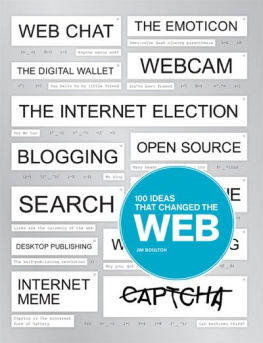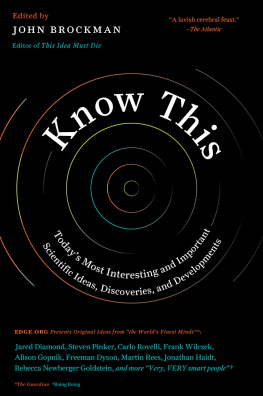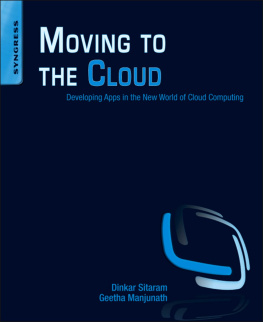100 IDEAS THAT
CHANGED THE WEB

100 IDEAS THAT
CHANGED THE WEB
Jim Boulton
Laurence King Publishing
Introduction
The last 20 years has seen the birth and rise of the Web at an astronomical pace. We have witnessed the birth of the Information Age, equal in magnitude to the transition to the modern world from the Middle Ages. We do everything differently. Just as Gutenbergs printing press allowed the accumulated knowledge of the human race to reach every person who could read, the Web extends this knowledge to everyone with access to a computer.
This book is meant to be an accessible introduction to the history of the Web, but we would not have the Web if it were not for the internet. In fact, we dont get to the invention of the World Wide Web until idea 21, the preceding ideas lay its foundations. So this is not only a book of ideas that changed the Web, it also includes those that led to its creation.
While there is a lot of cross-referencing in the book, each essay stands alone. Much as Tim Berners-Lee envisaged the Web, the reader can dip in and out of the book at will, following the links between ideas or reading chronologically from beginning to end. The choice is yours.
Our story starts and ends with a dream. In 1934, a Belgian bibliophile dreamt of a telescope that could transmit electronic documents. In 1999, Tim Berners-Lee outlined his vision for a Semantic Web. An information space of an unimaginable amount of data, automatically interrogated, processed and turned into knowledge. A dream that is now within our grasp.
In between, we have 98 other ideas. Some are revolutionary, like the peer-to-peer network. Others are humble, like the GIF. All of them have contributed to the world-changing phenomenon that is the World Wide Web.
Ideas 120 examine the precursors, those ideas that led to the creation of the Web. Without hypertext, the modem, the Graphical User Interface, the mouse, the PC and of course the internet, there would be no Web. The Web and the internet are terms that are often erroneously interchanged, before we get any further, perhaps now is a good time to clarify the difference. The internet is a global system of interconnected computer networks. It is the infrastructure that carries email, instant messaging, Voice over IP, network games, file transfer and the Web. The Web is the most accessible component of the internet, an interlinked system of hypertext documents.
Ideas 2153 deal with the Webs infancy, introducing the browser, the JPEG, search, multi-player gaming, the webcam, the banner ad, net art, webmail and the blog. These early years were a time of experimentation, a DIY landscape typified by the now-deleted GeoCities. It was a rich period of creative expression dominated by nonconformists. Hackers, artists, and other misfits dived into the unknown and changed the world. Tragically, evidence of this culturally significant period is largely lost. The story of the first webpage, published in August 1991, is typical. It was continually overwritten until March 1992. No copy of the original webpage, not even a screenshot, exists.
Ideas 5471 address the pre-social Web and the birth of ecommerce. At the end of the last century, dot-com hysteria was in full force. Broadband arrived and the Web began to lose its original spirit. Brands entered cyberspace, as it was then known. Websites became more polished, recognizing the commercial demands of their paymasters. The pivotal moment was the appearance of digital wallets, primarily PayPal. There was a reaction: John Perry Barlow, member of The Grateful Dead, declared the Independence of Cyberspace and Shawn Fanning created the first peer-to-peer network. He called it Napster. Then came the crash: those companies that survived not only had deep pockets, they had user-generated content at their heart. Amazon had customer reviews, eBay had user-driven auctions, Wikipedia was entirely written and edited by its users. Even Google had user-generated links.
With ideas 7498, the Web came of age, becoming dynamic, social and, crucially, mobile. In the early years of the Web, pages were built entirely in HTML. With each click, a new page was loaded. Even a small change to the page meant the entire page had to be refreshed. In 2005, Google launched Google Maps, which behaved more like a software application than a website. Web 2.0 had arrived and with it came the social Web. Although sites like Blogger and Friendster had started long beforehand, it was in 2006 that the social Web really took off. That year, Facebook opened up to everyone of 13 and older, Twitter was founded, YouTube went mainstream, and aggregators like Fark suddenly had the power to take servers down. The launch of the iPhone in 2007 took the Web mobile, at least in Europe and the US, by this point the number of people in Asia accessing the Web via mobile phone exceeded the number browsing on a PC. Our most important device became the one in our pocket. Its the one screen that cuts across our work and leisure time. Its the first screen we look at in the morning and the last one we look at at night.
With ideas 99 and 100 we look to the future. When the Web was first conceived, it was intended to be more than an interconnected library of information. The ultimate aim was a system that drew meaning from this information. In an increasingly connected world, our ability to capture and store data is staggering. When this data is marked up with contextual information, it becomes knowledge and we are one step closer to a Web that thinks. The Semantic Web.
With only 100 ideas, there is not room for every innovation that shaped the Web. The Mother of all Demos, Social Bookmarks, Bitcoin, Twitch TV and the Hash Tag were incorporated within other ideas, others were dismissed entirely. Sorry Shockwave, we had some good times together but it was never going to last. As for the Active Desktop, you were interesting but in the end, just too demanding. The less said about Chat Roulette the better. It was for research purposes, honestly.
While writing this book, it became apparent that exploring the history of the Web is not just a nostalgic trip into our recent digital past but an exploration of the very way we think and communicate. Our thought processes are non-linear and erratic but the way we make sense of things and express ourselves is linear. Pioneers like Paul Otlet, Vannevar Bush, Theodor Nelson, Douglas Engelbart and Tim Berners-Lee questioned this conviction. Their legacy is the World Wide Web. A place that breaks down national and cultural borders. A place that blurs the boundaries between generating and exchanging ideas. A place that has toppled regimes and created new economic models. A place that has radically changed the way we work, play, shop, socialize and otherwise participate in society. But above all, a place that is for everyone.
The idea of the internet was born in Belgium
IDEA N o 1
THE MUNDANEUM
In 1934, six decades before the birth of the Web, a Belgian bibliophile described his vision for a tl photographie, an electronic telescope which could transmit any document in the world to a television screen.

Paul Otlet, founder of the Mundaneum and creator of the Universal Decimal Classification system.
Paul Otlet loved libraries. In 1891 he met a kindred spirit, fellow Belgian and future Nobel Prize winner, Henri La Fontaine. Together they conceived the Mundaneum, a comprehensive collection of the worlds published knowledge, equal in ambition to the great Library of Alexandria.
Next page









